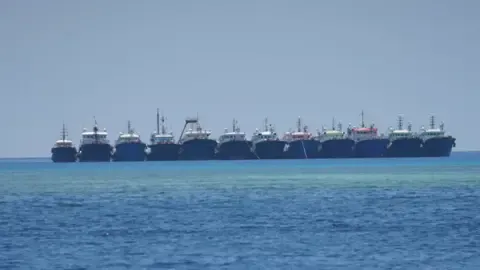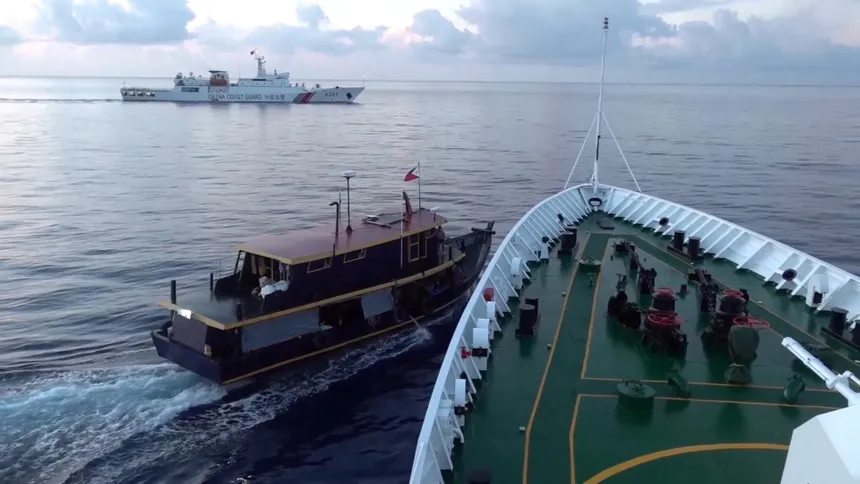The coast guards of China and the Philippines have clashed again in the South China Sea, sparking concerns of increased tensions in the region. According to Chinese officials, a Philippine coast guard ship deliberately collided with one of China’s vessels near Sabina Shoal, a disputed atoll in the Spratly Islands. The incident occurred early on Monday morning, when two Philippine coast guard ships entered waters near the shoal, ignoring warnings from the Chinese coast guard.
The Chinese coast guard accused the Philippine side of being entirely responsible for the collision and warned that it would bear all the consequences if it continued to provoke and infringe on China’s sovereignty. China claims “indisputable sovereignty” over the Spratly Islands, including Sabina Shoal and its adjacent waters. The disputed territory is also claimed by Vietnam and Taiwan, making it a sensitive issue in the region.
The Philippines has not yet commented on the incident, but previous tensions between the two countries over the Spratly Islands have been simmering for some time. In April, the Philippine coast guard deployed one of its key patrol ships to Sabina Shoal after Filipino scientists discovered submerged piles of crushed corals in its shallows, sparking suspicions that China may be preparing to build a structure in the atoll. The Chinese coast guard later deployed a ship to the area, leading to a series of confrontations between the two sides.

Philippines Provokes China with Ship Collision (Image via Getty)
Despite efforts to ease tensions, the situation remains volatile. Last month, China and the Philippines reached an agreement to prevent further confrontations when the Philippines transports new batches of sentry forces, along with food and other supplies, to its territorial outpost in the Second Thomas Shoal. However, the incidents in the area continue to raise concerns about the potential for armed conflict.
The clashes between the two countries’ coast guards have become increasingly alarmist, with Chinese and Philippine ships and accompanying vessels engaging in confrontations since last year. The Second Thomas Shoal, which has been closely guarded by Chinese coast guard, navy, and suspected militia ships, has been a particular flashpoint. The Chinese coast guard has taken control measures against Philippine ships that enter the area, warning that any further infringement or provocation would have severe consequences.
The recent incident has sparked concerns that the situation could escalate quickly, with potential implications for regional security and stability. The United States, which has been increasing its military presence in the region, has expressed concerns about the growing tensions between China and its neighbors. The incident also raises questions about the effectiveness of the Philippine government’s efforts to manage its territorial disputes with China.
In light of this incident, it is clear that the relationship between China and the Philippines remains strained, and that the situation in the South China Sea is reaching a critical point. The recent agreement between China and the Philippines to prevent further confrontations in the Second Thomas Shoal is a step in the right direction, but more needs to be done to address the underlying issues and reduce tensions in the region.


























